Compacts, Lipsticks, and Safety Razors
This blog is about three things that, if you let your imagination run wild, are kind of related. I’m talking about makeup compacts, lipstick tubes, and safety razors.
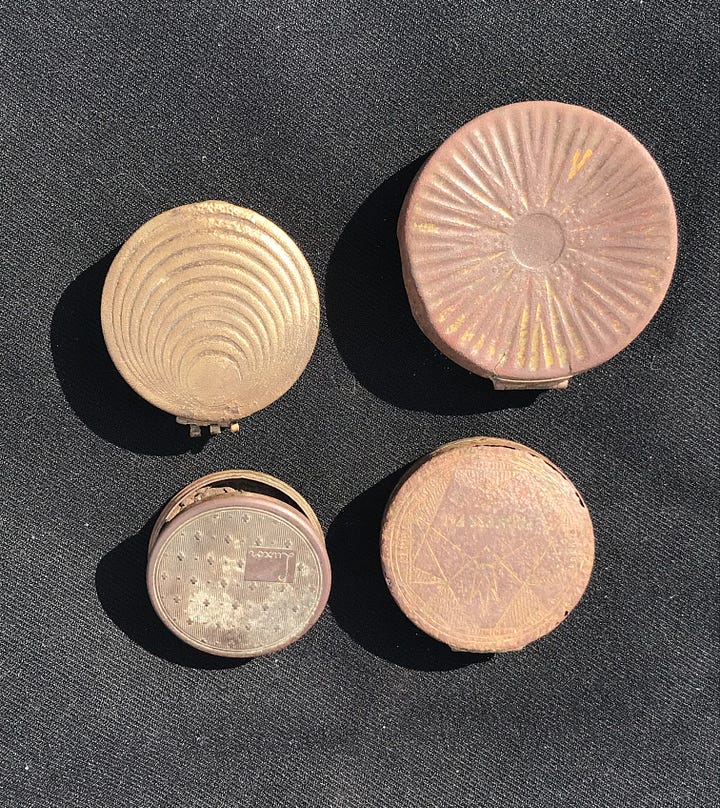
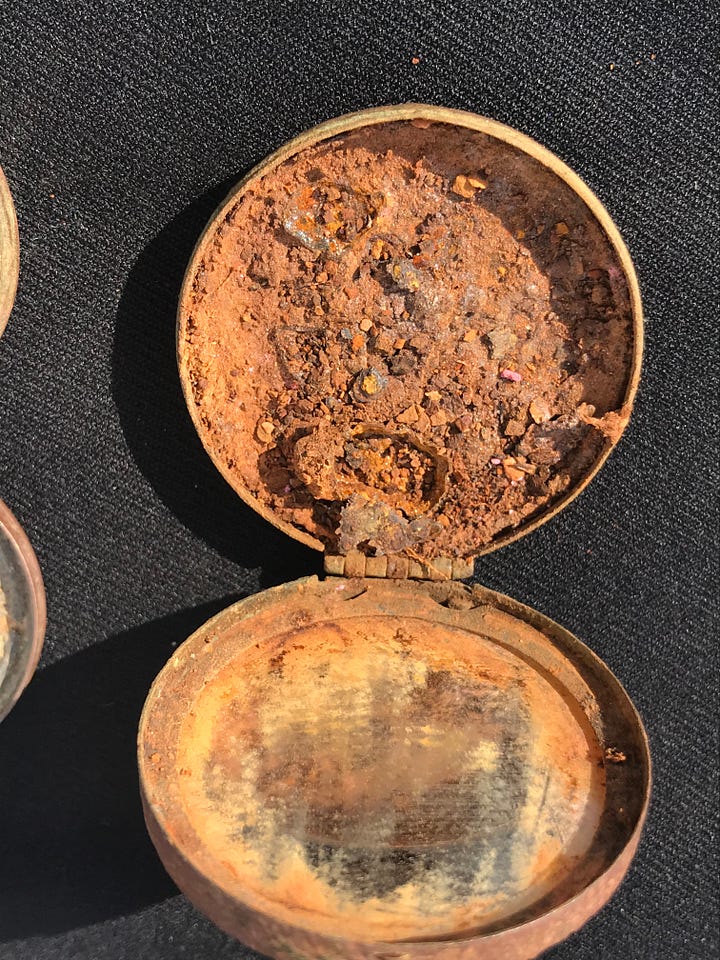

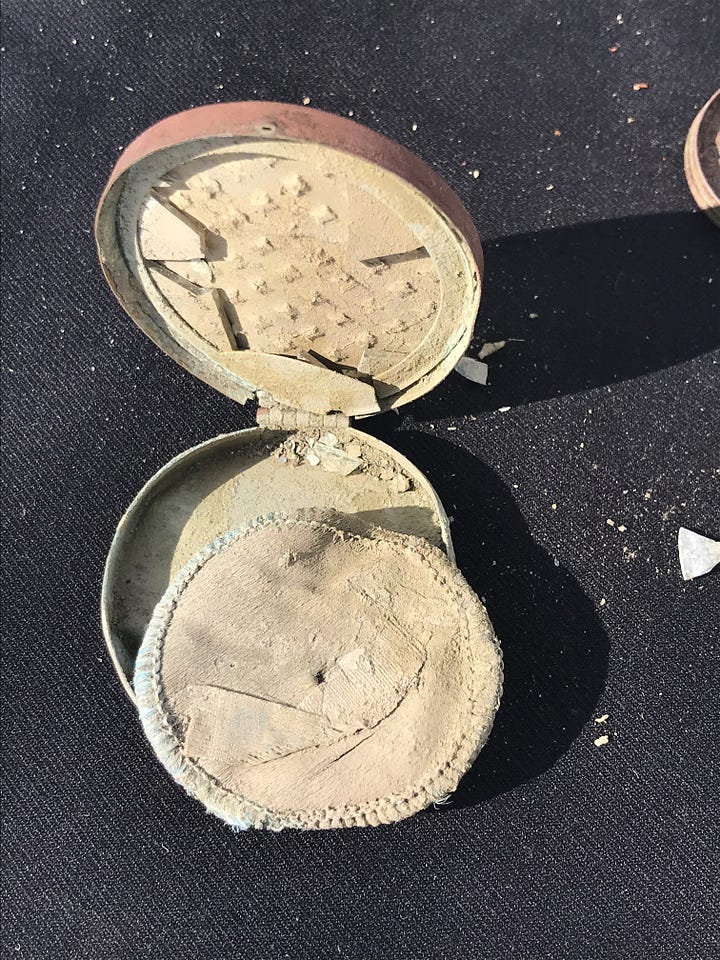
The first mass-produced compact appeared in the early 20th century, and were designed for women to carry powder and a small mirror. These early compacts were often beautifully crafted, with enamel, gold, or silver finishes, making them both functional and fashionable. Understandably, the ones I find that have been in the ground for decades are not brand new looking.
The first one (lower left in the group photo above) is a Luxor, from the 1920’s or 1930’s. The first Luxor metal compact dates to about 1915. The next one (lower right) is a Princess Pat. It is believed that the name originated from Princess Patricia of Connaught, one of Queen Victoria’s grandchildren. The one I found dates to around 1930. Unfortunately, the other two I have don’t have any markings, so I can’t be sure of their age and origins.
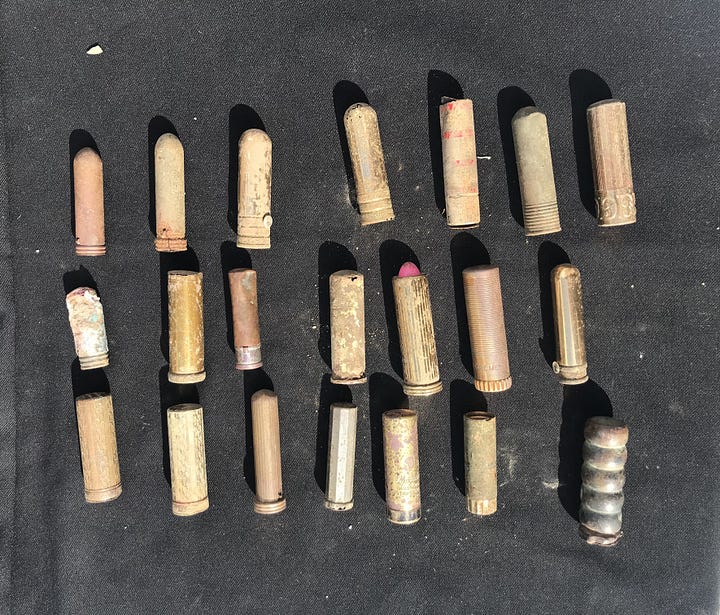

The use of lipstick dates back thousands of years, and early variations were made of crushed gemstones, red algae, and beeswax. The first commercial lipstick, invented in 1884 by Guerlain Parfumeurs of Paris, was covered in silk paper and made from deer tallow, castor oil, and beeswax. Coloring was imparted by red stains from plants since the lead in vermillion was known by then to be dangerous.
In 1915, Maurice Levy and the Scovill Manufacturing Company (more commonly known for their buttons, as discussed in my two previous blogs titled Early Buttons and Military, Two-Piece, Blow Hole, and other Buttons), created the “Levy tube”, a metal lipstick tube with a sliding system to advance the lipstick as it was used. By this time, the lipstick was made from carmine dye, which was extracted from the cochineal beetle, found in Mexico and Central America. The ground beetle parts were mixed with oil and a wax base. Levy’s metal cylinder containers had a small slide on the side of the inner tube to push the lipstick up for use and retract it to protect it from damage. You can see two such examples in the photo on the right above. In 1923, the first swivel-up tube was invented, and during World War II, metal tubes were replaced by plastic and paper tubes. After the war, demand for metal fell, and metal tubes were again in use.
Many of the lipstick tubes in my collection still contain lipstick, and include brands such as Revlon, Helen Neushaefer, Max Factor, La Bonita, and Doucette.
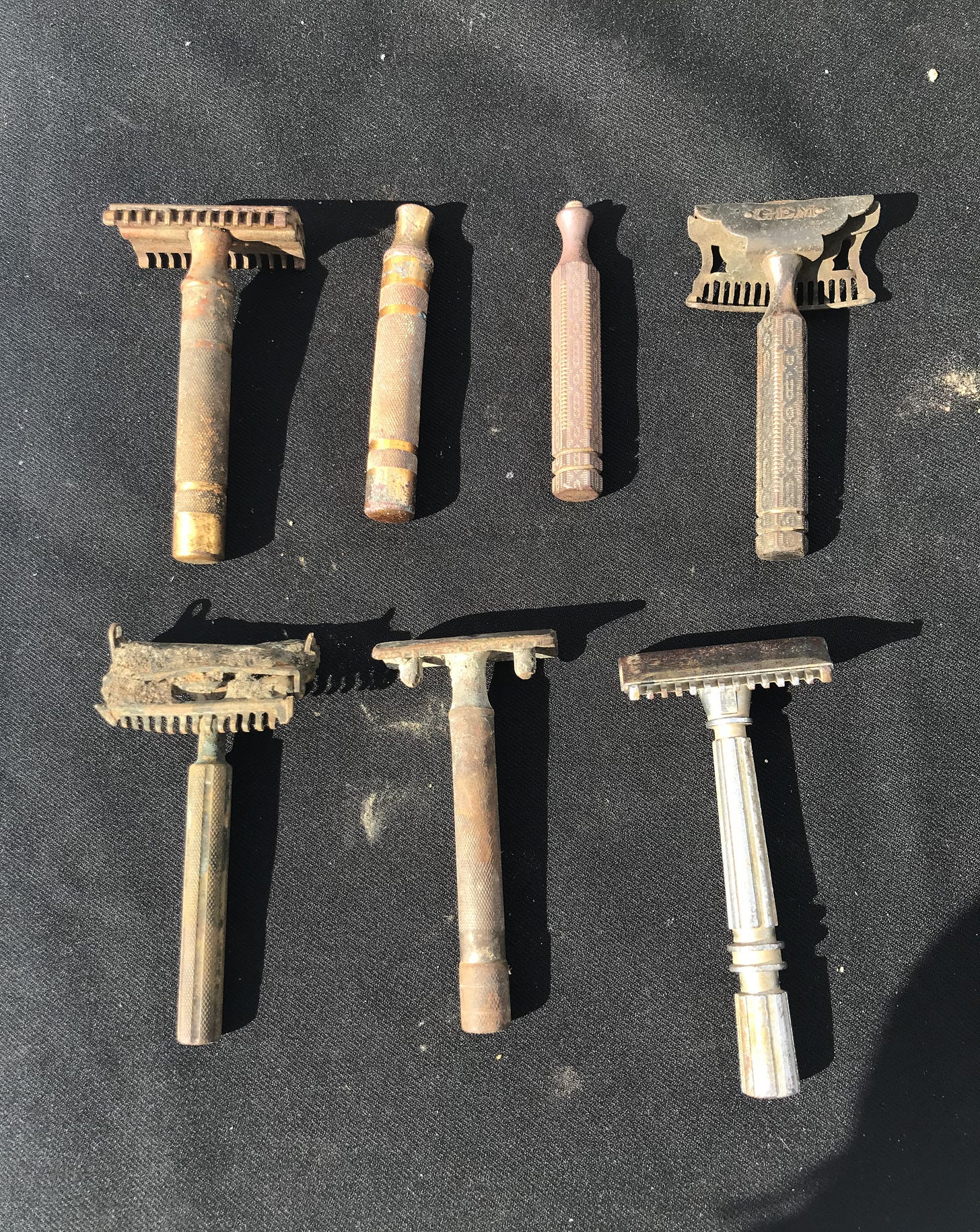
King Camp Gillette, along with William Nickerson, an MIT trained engineer, founded the Gillette Safety Razor Company in 1901, and patented the double-edged safety razor in 1904. A safety razor is a shaving implement with a protective device positioned between the edge of the blade and the skin. The initial purpose of these protective devices was to reduce the level of skill needed for injury-free shaving, thereby reducing the reliance on professional barbers.
Before the invention of the safety razor, men shaved with straight razors, and (needless to say) facial hair was both fashionable and quite common.
Grooming and beauty tools have been around for thousands of years, but as you can see here from my detecting finds, the industry really started making strides around the turn of the 20th century, and it has continued to grow ever since.



